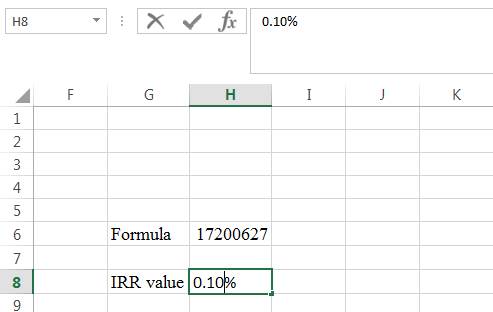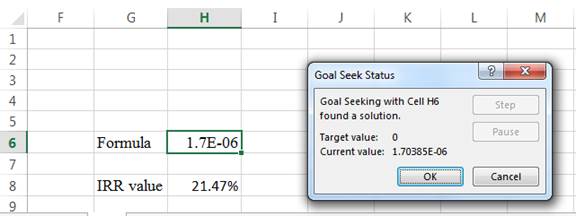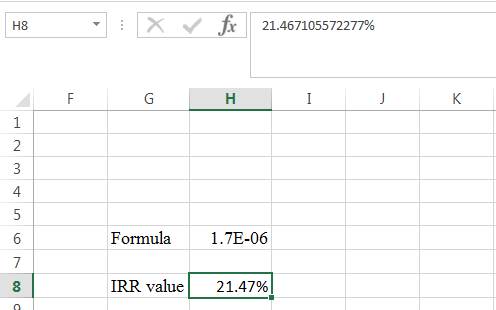
Concept explainers
Project Evaluation. Aria Acoustics, Inc. (AAI), projects unit sales for a new seven-octave voice emulation implant as follows:
| Year | Unit Sales |
| 1 | 67,500 |
| 2 | 83,900 |
| 3 | 98,700 |
| 4 | 86,000 |
| 5 | 72,000 |
Production of the implants will require $1,500,000 in net working capital to start and additional net working capital investments each year equal to 15 percent of the projected sales increase for the following year. Total fixed costs are $1,950,000 per year, variable production costs are $230 per unit, and the units are priced at $355 each. The equipment needed to begin production has an installed cost of $18,500,000. Because the implants are intended for professional singers, this equipment is considered industrial machinery and thus qualifies as seven-year MACRS property. In five years, this equipment can be sold for about 20 percent of its acquisition cost. AAI is in the 35 percent marginal tax bracket and has a required return on all its projects of 15 percent. Based on these preliminary project estimates, what is the
To find: The net present value and the internal rate of return.
Introduction:
The variation between the present value of the cash outflows and the present value of the cash inflows is known as net present value. In capital budgeting, the net present value is utilized to analyze the profitability of a project or investment. The rate of return which equates the initial investment and the present value of net cash inflows are referred to as internal rate of return. This is also called as actual rate of return.
Answer to Problem 25QP
The net present value is $3,643,713.77 and the internal rate of return is 21.47%.
Explanation of Solution
Given information:
Company A projects the unit sale for the new 7-octave voice emulation implant as follows:
- The year 1 unit sales is 67,500.
- The year 2 unit sales is 83,900.
- The year 3 unit sales is 98,700.
- The year 4 unit sales is 86,000.
- The year 5 unit sales is 72,000.
The production implant needs $1,500,000 in the net working capital to begin their production activities. The extra net working capital investment for every year is equivalent to the 15% of the projected sales, which has to rise for the following year. The total fixed cost is $1,950,000 for a year, the unit price is $230, and the variable production cost is $355. The installation cost of the equipment is $18,500,000.
The equipment is qualified in the 7-Year MACRS depreciation under the property class. In 5 years, the equipment sale can be sold for 20% of its acquisition cost. The marginal tax bracket is 35% and has the required rate of return of 15%.
MACRS depreciation table for year 7:
| MACRS Depreciation table for seven year | |
| Year | Seven year |
| 1 | 14.29% |
| 2 | 24.49% |
| 3 | 17.49% |
| 4 | 12.49% |
| 5 | 8.93% |
| 6 | 8.92% |
| 7 | 8.93% |
| 8 | 4.46% |
Computation of the cash outflow:
Calculations:
The sales figure for every year along with the unit price is given. The variable cost for a unit is utilized to compute the total variable cost and the fixed cost are stated as $1,950,000 for a year.
The depreciation is calculated by using the initial cost of the equipment, which is $18,500,000 times the actual MACRS depreciation for every year. At the bottom of the of the income statement, the depreciation is added back to determine the operating cash flow for every year.
Table showing the cash inflows:
| Year | 1 | 2 | 3 | 4 | 5 |
| Ending book value | $15,856,350 | $11,325,700 | $8,090,050 | $5,779,400 | $4,127,350 |
| Sales | $23,962,500 | $29,784,500 | $35,038,500 | $30,530,000 | $25,560,000 |
| Less: Variable costs | 15,525,000 | 19,297,000 | 22,701,000 | 19,780,000 | 16,560,000 |
| Fixed costs | 1,950,000 | 1,950,000 | 1,950,000 | 1,950,000 | 1,950,000 |
| Depreciation | 2,643,650 | 4,530,650 | 3,235,650 | 2,310,650 | 1,652,050 |
| EBIT | 3,843,850 | 4,006,850 | 7,151,850 | 6,489,350 | 5,397,950 |
| Less: Taxes | 1,345,348 | 1,402,398 | 2,503,148 | 2,271,273 | 1,889,283 |
| Net income | 2,498,503 | 2,604,453 | 4,648,703 | 4,218,078 | 3,508,668 |
| Add: Depreciation | 2,643,650 | 4,530,650 | 3,235,650 | 2,310,650 | 1,652,050 |
| Operating cash flow | $5,142,153 | $7,135,103 | $7,884,353 | $6,528,728 | $5,160,718 |
| Net cash inflows: | |||||
| Operating cash flow | $5,142,153 | $7,135,103 | $7,884,353 | $6,528,728 | $5,160,718 |
| Change in net working capital | –873,300 | –788,100 | 676,275 | 745,500 | 1,739,625 |
| Capital spending | 3,849,573 | ||||
| Total cash inflows | $4,268,853 | $6,347,003 | $8,560,628 | $7,274,228 | $10,749,915 |
After the calculations of the operating cash flows for every year, it is essential to account for other cash flows. The other cash flows are the net working capital and the capital spending, that is, the after-tax salvage of the equipment.
Formula to calculate the net working capital:
Computation of the net working capital:
Note: The total net working capital in year 1 will be 15% of the sales, which may increase in year 1 or year 2. The net working capital cash flow is negative because of the increasing sales; thus the company will spend more money on the net working capital to maximize it. In year 3, the net working capital is positive because of the decline in sales. In year 5, the net working capital is the recovery of all the net working capital of the project.
Computation of the ending book value:
Formula to calculate the after-tax salvage value:
Computation of the after-tax salvage value:
Note: The market value of the equipment is 20% of the purchase price of the equipment and it is $3,700,000.
Formula to calculate the net present value:
Computation of the net present value:
Hence, the net present value is $3,643,713.77.
Computation of the internal rate of return:
The internal rate of return is calculated by the spreadsheet method.
Step 1:

- Type the formula of the internal rate of return in H6 in the spreadsheet and consider the IRR value as H8.
Step 2:

- Assume the IRR value as 0.10%.
Step 3:

- In the spreadsheet, go to data and select What-if analysis.
- In What-if analysis, select Goal Seek.
- In ‘Set cell’ select H6 (the formula).
- The ‘To value’ is considered as 0.
- The H8 cell is selected for ‘By changing cell’.
Step 4:

- Following the previous step, click OK in the Goal Seek Status. The Goal Seek Status appears.
Step 5:

- The IRR value appears to be 21.467105572277%.
Hence, the internal rate of return is 21.47%.
Want to see more full solutions like this?
Chapter 9 Solutions
ESSENTIALS OF CORPORATE FINANCE (LL)
- Caduceus Company is considering the purchase of a new piece of factory equipment that will cost $565,000 and will generate $135,000 per year for 5 years. Calculate the IRR for this piece of equipment. For further instructions on internal rate of return In Excel, see Appendix C.arrow_forwardGardner Denver Company is considering the purchase of a new piece of factory equipment that will cost $420,000 and will generate $95,000 per year for 5 years. Calculate the IRR for this piece of equipment. For further Instructions on internal rate of return in Excel, see Appendix C.arrow_forwardHome Garden Inc. is considering the construction of a distribution warehouse in West Virginia to service its east coast stores based on the following estimates: a. Determine the net present value of building the warehouse, assuming a construction cost of 20,000,000, an annual net cost savings of 4,000,000, and a desired rate of return of 14%. Use the present value tables provided in Appendix A. b. Determine the net present value of building the warehouse, assuming a construction cost of 25,000,000, an annual net cost savings of 2,500,000, and a desired rate of return of 14%. Use the present value tables provided in Appendix A. c. Interpret the results of parts (a) and (b).arrow_forward
- Manzer Enterprises is considering two independent investments: A new automated materials handling system that costs 900,000 and will produce net cash inflows of 300,000 at the end of each year for the next four years. A computer-aided manufacturing system that costs 775,000 and will produce labor savings of 400,000 and 500,000 at the end of the first year and second year, respectively. Manzer has a cost of capital of 8 percent. Required: 1. Calculate the IRR for the first investment and determine if it is acceptable or not. 2. Calculate the IRR of the second investment and comment on its acceptability. Use 12 percent as the first guess. 3. What if the cash flows for the first investment are 250,000 instead of 300,000?arrow_forwardPostman Company is considering two independent projects. One project involves a new product line, and the other involves the acquisition of forklifts for the Materials Handling Department. The projected annual operating revenues and expenses are as follows: Required: Compute the after-tax cash flows of each project. The tax rate is 40 percent and includes federal and state assessments.arrow_forwardAustins cell phone manufacturer wants to upgrade their product mix to encompass an exciting new feature on their cell phone. This would require a new high-tech machine. You are excited about his new project and are recommending the purchase to your board of directors. Here is the information you have compiled in order to complete this recommendation: According to the information, the project will last 10 years and require an initial investment of $800,000, depreciated with straight-line over the life of the project until the final value is zero. The firms tax rate is 30% and the required rate of return is 12%. You believe that the variable cost and sales volume may be as much as 10% higher or lower than the initial estimate. Your boss understands the risks but asks you to explain the alternatives in a brief memo to the board, Write a memo to the Board of Directors objectively weighing out the pros and cons of this project and make your recommendation(s).arrow_forward
 EBK CONTEMPORARY FINANCIAL MANAGEMENTFinanceISBN:9781337514835Author:MOYERPublisher:CENGAGE LEARNING - CONSIGNMENT
EBK CONTEMPORARY FINANCIAL MANAGEMENTFinanceISBN:9781337514835Author:MOYERPublisher:CENGAGE LEARNING - CONSIGNMENT Cornerstones of Cost Management (Cornerstones Ser...AccountingISBN:9781305970663Author:Don R. Hansen, Maryanne M. MowenPublisher:Cengage Learning
Cornerstones of Cost Management (Cornerstones Ser...AccountingISBN:9781305970663Author:Don R. Hansen, Maryanne M. MowenPublisher:Cengage Learning Financial And Managerial AccountingAccountingISBN:9781337902663Author:WARREN, Carl S.Publisher:Cengage Learning,
Financial And Managerial AccountingAccountingISBN:9781337902663Author:WARREN, Carl S.Publisher:Cengage Learning, Managerial AccountingAccountingISBN:9781337912020Author:Carl Warren, Ph.d. Cma William B. TaylerPublisher:South-Western College Pub
Managerial AccountingAccountingISBN:9781337912020Author:Carl Warren, Ph.d. Cma William B. TaylerPublisher:South-Western College Pub Intermediate Financial Management (MindTap Course...FinanceISBN:9781337395083Author:Eugene F. Brigham, Phillip R. DavesPublisher:Cengage Learning
Intermediate Financial Management (MindTap Course...FinanceISBN:9781337395083Author:Eugene F. Brigham, Phillip R. DavesPublisher:Cengage Learning





